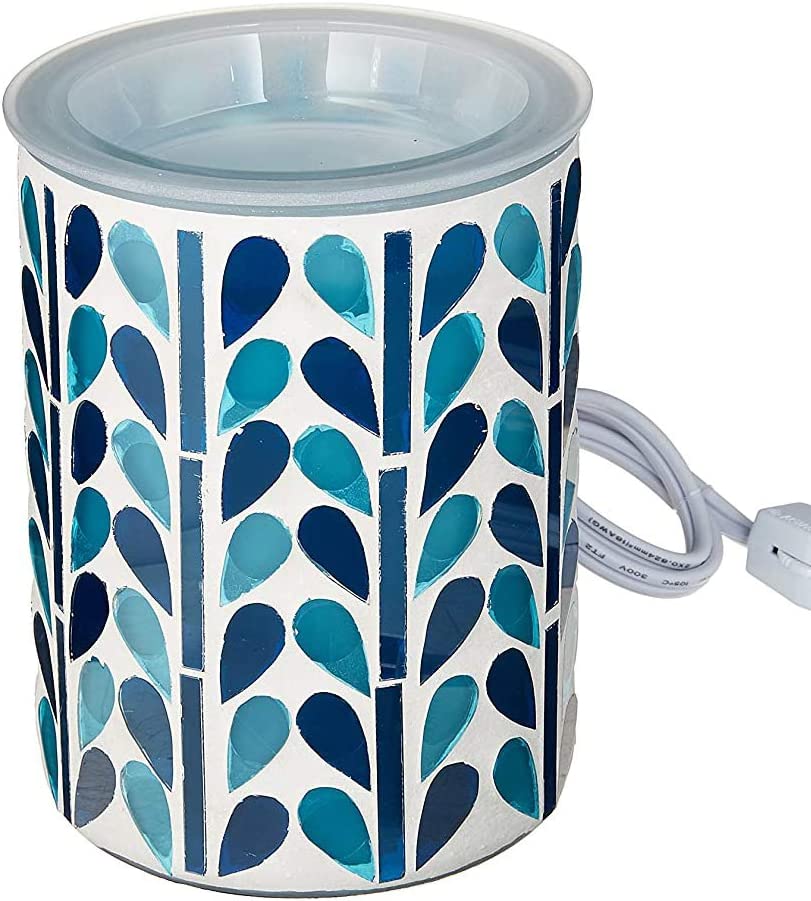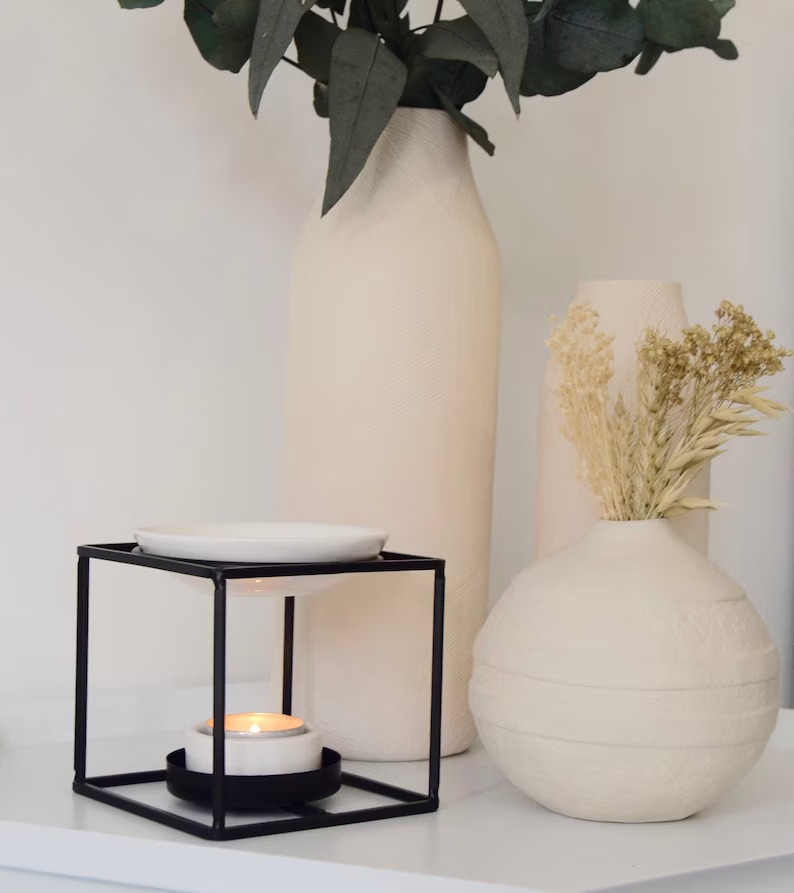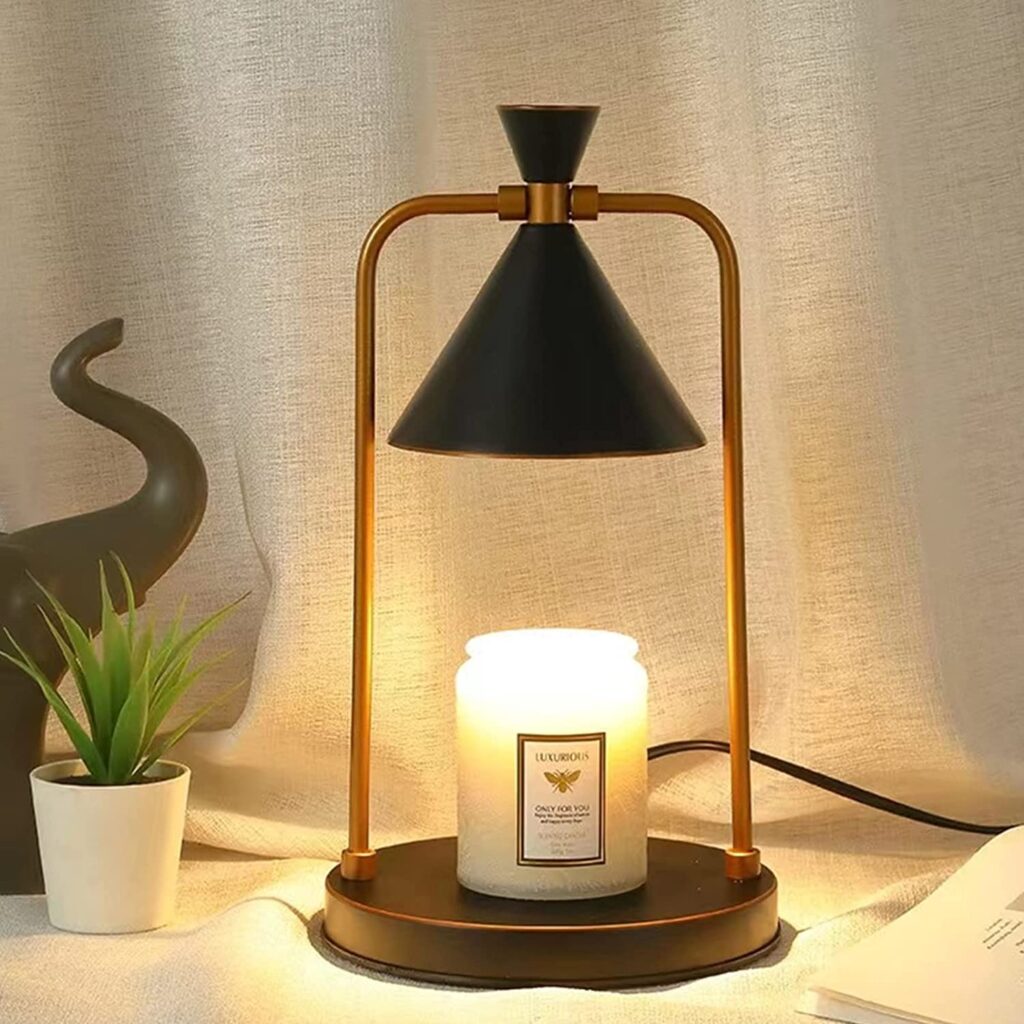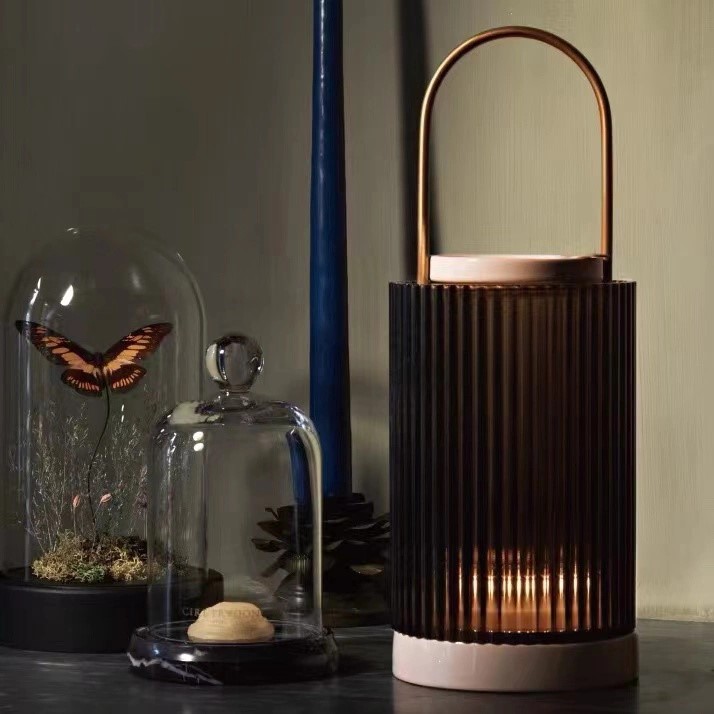Table of Contents
Are you looking for a way to make your home smell incredible without lighting a candle? A wax warmer might just be what you need. Wax warmers are devices that use heat to melt scented wax, releasing a pleasant aroma into a room. They come in various shapes, sizes, and styles and can be used with different types of wax, depending on your preference. Whether you want to create a cozy atmosphere or fill the air in your home, a wax warmer is a great option. Before using one, let’s dive deeper into how these devices work and what you need to know.
Types of wax warmers
When it comes to wax warmers, there are three main types to choose from electric, candle, and light bulb.

Mosaic Electronic Wax Warmer | Amazon
- Electric wax warmers are the most common type and are powered by electricity. These warmers use a heating element to melt the wax, which releases the fragrance into the air. They come in many different styles and designs, so you can easily find one that matches your home décor.

- Candle wax warmers, on the other hand, rely on a lit candle to generate heat and melt the wax. These warmers typically have a bowl on top that holds the wax, which is melted by the heat from the candle. These types s are less common than electric ones, but they can be a good option for those who prefer a more traditional approach to home fragrance. They are also an excellent choice for outdoor areas where access to electricity may be limited.

- Wax warmer lamps are another popular option. These warmers use the heat from a light bulb to melt the wax and release the fragrance. They are often less expensive than electric warmers and are easy to use – plug them in and turn them on. Additionally, since light bulb wax warmers use a standard bulb, you don’t have to worry about finding a replacement bulb.
Pros & Cons of Using a Wax Warmer
Pros of wax warmers
- Firstly, wax warmers have no flame or soot, unlike candles, making them perfect for households with children and pets.
- Secondly, wax warmers are incredibly easy to use and require little maintenance. You need to add a few wax melts or a small chunk of wax into the warmer dish and turn it on. Unlike traditional candles, trimming the wick is unnecessary, and the leftover wax can be reused or discarded.
- Thirdly, wax warmers are cost-effective in the long run. They are more affordable than other air fresheners, and the wax lasts longer than other fragrance products. The price per use is much lower, as the wax melts and can be used several times before the scent fades.
- Lastly, wax warmers provide a long-lasting fragrance that can last several hours. The scent is released gradually and subtly, creating a subtle and cozy ambiance in your home that lasts long after you turn it off. The scent is released gradually and subtly, creating a subtle and cozy ambiance in your home that lasts.
Cons of wax warmers
While there are many benefits to using wax warmers, there are also a few potential downsides to consider.
- Wax can be messy and hard to clean up if spilled.
- It must be plugged into an electrical source except for a candle-lit wax warmer.
How to use a wax warmer?
You might wonder how to use a wax warmer for the best possible results. Here’s a step-by-step guide on how to use one:
- Choose the suitable wax for your warmer. Many types of wax are available, including soy wax, beeswax, and paraffin wax. Choosing a wax with a melting point compatible with your wax warmer is important. If the wax has a melting point that is too high, it may not melt appropriately in your warmer, and if the melting point is too low, it may melt too quickly and not last as long. Some waxes have a more pungent scent and better throw than others, so you might have to try different types of wax to find the one that suits you.
- Add the wax to the warmer. Depending on the size of your wax warmer, add one to two wax cubes or a small piece of wax. Don’t overfill the dish, as it may cause the wax to spill over the sides when it melts. You can also mix two or more scents to create your unique fragrance.
- It’s important to take safety precautions when using a wax warmer. Ensure the warmer is placed on a level and heat-resistant surface, and keep it away from flammable objects. Never leave the warmer unattended when it’s in use, and keep it out of the reach of children and pets.
How to maintain to clean your wax warmer?
Maintaining and cleaning your wax warmer is crucial to ensure its longevity and keep it working correctly.
To clean the wax warmer, unplug it and let it cool down completely. You can then use a soft cloth or paper towel to wipe away any remaining wax. To clean the dish thoroughly, you can use hot water and dish soap, taking care not to get any water near the electrical parts of the warmer. You can also use rubbing alcohol or vinegar to remove stubborn residue or stains. At last, make sure to dry the dish thoroughly before using it again.
Frequently Asked Questions
How long does it take for a wax warmer to heat up?
The time it takes for a wax warmer to heat can vary depending on the warmer type, the warmer’s size, and the amount of wax used.
On average, it can take about 15 to 30 minutes for an electric wax warmer to heat up and start melting the wax. A light bulb wax warmer may take slightly longer to reach the right temperature, but it will keep the wax at a consistent temperature once heated. Candle wax warmers take the longest to heat up, as they rely on the heat of a burning candle to melt the wax. It can take 15 minutes to an hour for the wax to melt completely in a candle wax warmer, depending on the candle’s size and the room’s ambient temperature. To ensure the safe and effective use of your wax warmer, it is crucial to follow the manufacturer’s instructions that are specific to your wax warmer.
What is the ideal temperature for a wax warmer?
The ideal temperature for a wax warmer will depend on the wax used. For electric warmers, most waxes should be melted at temperatures between 90 to 110 degrees Fahrenheit. A lower temperature setting works best for soy and beeswax as it limits the amount of scent released. For Paraffin wax and other similar waxes, a higher setting is better because it can help release more fragrance from the wax. With candle warmers, you want to keep an eye on the flame size so that it doesn’t get too hot since this can cause the wax to burn instead of melting.
How do I clean my wax warmer?
Cleaning your wax warmer is an essential part of maintaining its longevity and optimum performance. Here’s a quick guide on how to clean your wax warmer:
- Turn off the warmer and unplug or remove the candle if a candle warmer is being used. Wait for the wax to cool and harden – this will make removing it easier.
- Remove the hardened wax by either gently popping it out of the warmer or using a paper towel to soak up the old wax in the dish. Ensure you do not use sharp objects as they might scratch or damage the dish.
- Clean the dish with hot water and dish soap. Add a few drops of dish soap and pour hot water into the dish. Use a soft sponge or cloth to clean the dish, making sure to remove any wax residue or stains.
- Alternatively, you can use rubbing alcohol or vinegar to remove any stubborn residue or stains. Soak a cloth in rubbing alcohol or vinegar and gently wipe down the dish.
- Dry the dish and the warmer with a soft cloth or paper towel. Ensure everything is completely dry before using the wax warmer again.
It’s essential to follow the manufacturer’s instructions when cleaning your wax warmer, as some warmers may require specific cleaning instructions. With proper maintenance and regular cleaning, your wax warmer will perform optimally and provide a long-lasting fragrance
your wax warmer will perform optimally and provide a long-lasting fragrance.
Can I use loose wax in a wax warmer?
It is not recommended to use loose wax, like those typically used for hair removal, in a wax warmer. These types of waxes have a lower melting point and are not meant for this purpose. Instead, it would be best to use specific waxes designed for wax warmers.
The wax melts used in wax warmers are typically made from a blend of natural or artificial oils, fragrances, and waxes formulated explicitly for use in a wax warmer. They have a higher melting point and are designed to melt evenly and release fragrance effectively.
Using the wrong type of wax in a wax warmer can result in a mess and damage to the wax warmer due to the wax melting at a higher temperature than intended. Therefore, it’s essential only to use wax melts designed explicitly for use in wax warmers to ensure proper and safe usage.













